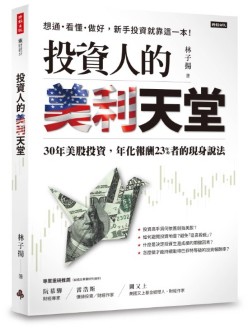Nasdaq index
Crazy market valuations
- The Nasdaq was at 5,048.62 on March 10, 2000 (with an intraday high of 5,132.52), more than double its level a year earlier.
- During the dot-com bubble, the Nasdaq Composite rose nearly sevenfold, from 743 to a peak of 5,048.
- In March 2001, the price-to-earnings ratio of the Nasdaq Index was 175. On June 28, 2024, the price-to-earnings ratio of the Nasdaq Index stocks was 31.88. The P/E ratio increased 22% compared to the trailing four quarter average P/E ratio of 26.2.
How badly did it fall?
In the second quarter of 2000, the dot-com bubble that had never been seen in the century began, and the September 11 terrorist attacks in 2001 caused the U.S. stock market to hover at the bottom of the crash from 2000 to 2002. The period lasted for three years, representing technology stocks and The Nasdaq index of growth stocks has fallen by up to 78%!
In August 2002, the Nasdaq index barely closed at a low of 1,300, but this was not the worst time. On October 4, 2002, the Nasdaq index fell to 1,139.90, down 78% from its peak.
When will it be restored?
It will take 15 years, until April 24, 2015, for the Nasdaq to recover all the losses from its decline since 2000 and return to its peak.
Famouse companies
Number of IPOs
In 2000, about 500 companies were listed on the US stock market, but in 2001, the first year after the dot-com bubble, only 20 companies were listed on the US stock market.
Top value company
During the US dot-com bubble in 2000, Cisco’s market capitalization peaked at US$550 billion. At that time, no one doubted that Cisco would be the first listed company in history to reach a market capitalization of US$1 trillion. But US$550 billion is the highest point of Cisco’s market value. On June 28, 2024, Cisco’s market value was only US$189 billion.
Regarding the company Cisco, please see my post of “Cisco, ex-biggest company, the representative of dot-com bubble“
Even blue-chip technology stocks like Intel and Oracle are down more than 80%.
The Internet is not all bad
Many famous companies that survived the bubble went on to become extremely successful businesses, proving that the Internet was not all bad. Companies that survived the bubble and later resurrected include Amazon, Electronic Bay, and Priceline.
What these three companies have in common is that their business models rely heavily on the Internet. They proved to the world that the Internet bubble should not bring down everyone at once. The Internet has indeed brought convenience and benefits to the world and businesses, and has since changed our lifestyle──e-commerce and cloud computing are what they are today. No, that’s an example.
Companies reborn from the ashes
Amazon’s stock price also fell month by month. The dot-com bubble caused the stock to fall from $113 to $5.50 per share, and the company’s stock price lost more than 95% in two years. Amazon’s market value was only US$30 billion in March 2000, but in 2018 it became the first listed company to reach US$1 trillion.
Priceline was later acquired by Booking.com. For information about Booking.com, please see the introduction in my blog post “How does Booking, the king of travel e-commerce, make money? Future Prospect Analysis”

Related articles
- “Economic crisis caused by overinvestment
- “How crazy was dot-com bubble? Companies have risen like a phoenix from the ashes“
- “Cisco, ex-biggest company, the representative of dot-com bubble“
- “How does Booking, the lord of travel e-commerce, make money? Future Prospect Analysis“
- “Sahm Rule, a 100% accurate recession indicator, was triggered“
- “Powerful and persuasive Buffett indicator, whether market is overheat“
- “Querier to Annualized rate of return for Nasdaq Index“
- “Global stock markets performance comparision over the past 30 years in a table“
- “Market index and the market index ETF is not identical“
- “S&P 500 vs. Nasdaq 100 index, how to choose a market index?“
- “A table comparing S&P 500, Nasdaq, Dow Jones, Philadelphia Semiconductor Index over the years since its inception and annualized returns“
- “Todolist when the stock market crashes“
- “How to deal with market crash or sharp pullback?“
- “Investors should be happy when market crash“
- “Does the stock market fall deep enough?“
- “Market volatility is investors’ friend“
- “2020 market crash, why more retail investors than Wall Street made money?“
- “The uncertainty in Investing“
- “Retail investors’ wrong investment concept not worth trying at all“
Disclaimer
- The content of this site is the author’s personal opinions and is for reference only. I am not responsible for the correctness, opinions, and immediacy of the content and information of the article. Readers must make their own judgments.
- I shall not be liable for any damages or other legal liabilities for the direct or indirect losses caused by the readers’ direct or indirect reliance on and reference to the information on this site, or all the responsibilities arising therefrom, as a result of any investment behavior.
